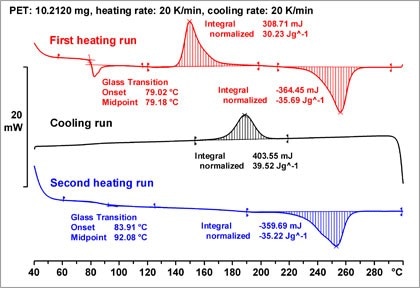
Thermal analysis is an excellent method for identifying and characterizing thermoplastics because their properties are strongly dependent on temperature.
Thermoplastics
Thermoplastics soften on heating and can be molded into thousands of different shapes using methods such as injection molding or extrusion. Providing decomposition does not occur, the cycle of heating, molding, and cooling can be repeated very many times. This behavior distinguishes thermoplastics from elastomers or thermosets, which have are molded by means of an irreversible chemical reaction.
Among the most widely used thermoplastics are polyethylene, (PE), polypropylene, (PP), and polyesters such as polyethylene terephthalate, (PET).
Techniques Covered in the Webinar
Different thermal analysis techniques that can be used to characterize thermoplastics. The most frequently used methods are DSC, TGA, TMA, and DMA.
The most important effects that can be analyzed by DSC are the glass transition, melting behavior, reaction enthalpies, and the influence of fillers.
For TGA, the main applications are content analysis, thermal stability and evaporation behavior.
TMA is normally used to study the expansion or shrinkage of materials.
DMA is the best method for characterizing viscoelastic behavior of materials.